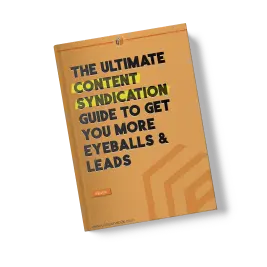Introduction
An economic downturn makes crisis communications a test of trust. Trust in your staff that they will step up to the challenges. Trust in your partners that they will still contribute their share. And for everyone, trust that the economy will rebound.
But it’s also trust in your vendors that they will deliver as promised and help you where they can.
Here’s the thing about crisis management for B2B marketers: To your customers, YOU are the vendor. Do your customers trust that you – their vendor – will keep your commitments and help wherever you can?
Customers rely on B2B technology companies for stability and guidance. Many are betting their business on your products and services. While it’s always important to enhance customer satisfaction, it’s especially important in economic downturns.
In a
PwC survey, 76% of companies faced medium-to-high impact crises in the past two years – yet only 20% had a robust plan in place. Are you prepared? Has your planning been hampered or postponed because of a tough economy?
As a chief marketing officer (CMO), you have a vital role in preserving customer trust through strategic crisis communication. In fact, when you do it well, it doesn’t just ease potential losses – it can make your customers more loyal to you and your brand.
Preparation Is the First Step to Protect Trust
Whether it’s a significant missed forecast, a prominent reduction in force, loss of a major customer, or any other consequential event in an economic downturn, the very definition of a crisis means you and your teams must act quickly, efficiently, and decisively – you must be prepared. A solid crisis communications plan requires proactive, empathetic, and transparent communication.
But first, crisis planning also requires an objective and critical evaluation of your current capabilities. As I noted at the start, PwC’s most recent
Global Crisis and Resilience Survey of 1,812 business leaders found that 89% of organizations have had a crisis in the previous two years, with 76% categorizing their crisis as “medium-to-high impact.” However, only one in five have a fully integrated, organization-wide crisis program, which includes crisis communications.
Here’s how I recommend approaching your crisis communications plan so that you can guide your organization through effective communication management.
1. Build a Solid Crisis Communication Plan
Preparation is hugely important. Your well-thought-out crisis communication plan carefully builds positive perceptions of your brand through messages that are swift, clear, and consistent. The plan must anticipate likely and specific risks, such as
customer budget cuts, supply chain slowdowns, or evolving market needs.
Be prepared to communicate swiftly and proactively while your customers’ perceptions are forming, rather than in reactive attempts to change negative perceptions that have already set in.
Identifying a crisis communication team is critical. It should include representatives of all the customer-facing teams in your company. That includes your marketing group, of course. But also, sales, product, call center, and even resellers and partners. When you strengthen the unified message, you reduce friction, conflict, and delay.
Here, PwC learned that gaining executive sponsorship is easier than staffing the crisis team. They found that while 93% of business leaders have identified a C-level sponsor, 31% admit that building a skillful team is a major challenge.
Regardless of position, each member should know their role and have pre-approved message templates to hasten their responses. As with any plan, you must also review and update it regularly so that it is current with the latest market dynamics and company updates.
Essentially, in a crisis, your team should already know who says what, to whom, and how.
2. Demand Transparency and Honesty
With economic challenges, your strongest asset is transparency. Many find it tempting to shield stakeholders from inconvenient and downright bad news. But that surely erodes the trust you’re trying to enhance.
Customers are smart, sensitive, and skeptical. And they respect honesty, especially when you deliver it openly and without equivocating. Be sure your teams are prepared and empowered to make clear statements about adjustments to products, services, or pricing. Share what you know and what you don’t know.
When your customers see that you are frank about your challenges, you limit misinterpretation and set your company apart as a brand with integrity. Your company earns respect and shows your commitment to long-term partnership – even when times are tough.
3. Communicate Clearly and Accessibly
During crisis, your messages must be relevant to all your diverse customer profiles, from CEOs to technical buyers. Avoiding industry jargon and simplifying language can make all the difference in comprehension and trust.
Consider that customers will see all your
communication channels: website, emails, social media, and customer portals. Remember that they will also see what you tell their peers in other segments.
Consistency is vital. Share your updates regularly, even if there’s little new to say. Predictability breeds reassurance and positions your company as a stable source of current and accurate information despite their fears and uncertainty.
In addition to clear communication, the right tools are crucial during a crisis. Download our eBook to learn how to effectively share content and maintain a consistent voice.
4. Embody Empathy and Understanding
Now more than ever, our customers want and need empathy. When your teams acknowledge your customers’ concerns and openly receive their feedback, you humanize your brand and build connections.
Work to adequately understand their evolving challenges, such as budget cuts or pivots in their business strategy. Then show that understanding in your messaging and other interactions.
Empathy is not just a soft skill; it’s a strategic advantage.
Show that you’re listening and responding to your customers’ specific pain points to reaffirm your company’s commitment to support them through good and bad.
5. Use Every Channel to Stay Connected and Visible
Today’s B2B customers expect immediate and easy access to accurate information. Use an
omnichannel marketing strategy – website, social media, email, and possibly virtual town halls – to be sure your customers can find critical, useful information in the form they are most comfortable with.
Focus on the unique strengths of each channel. For example, a quick update on Medium or LinkedIn can get you in front of misinformation, while a virtual town hall creates a forum to let you address customer concerns directly. This approach makes your messages accessible, timely, and interactive.
6. Listen and Respond to Public Feedback
Public perception can shift in real time, especially during a crisis. Assign part of your team to monitor social media, news mentions, and other public feedback. It’s essential for understanding the broader narrative around your brand. When – not “If” – rumors or misinformation start to spread, your swift response maintains your participation and control of the conversation.
Actively
engage with your customers online to show you are listening, clarifying misunderstandings, and even learning from constructive feedback. Demonstrate that you’re not just talking at your customers but collaborating with them.
7. Offer More Than Reassurance: Value
Offer your support and guidance freely and broadly. During economic downturns, your opportunity is to share relevant resources that help them navigate their challenges. Offer industry insights, cost-saving tips, and guidance on market adaptations.
Show that you are a trusted partner, not simply a vendor. Value-added support creates deep and meaningful connections, demonstrating that your commitment to their success goes beyond your own bottom line
8. Learn From Successful Examples
Effective crisis management for B2B marketers is, of course, nothing new. Its power is plain to see:
- In 2022, Slack, a popular B2B messaging platform, suffered a major service outage and sprang into action. They created a status page and updated it every 30 minutes. Twitter became their real-time communications vehicle to users. Throughout, the tone of the communications was both apologetic and sincere, openly acknowledging their errors. As a result, Slack steadied customer trust during a potential brand disaster.
- Microsoft took a proactive approach when the SolarWinds supply chain was attacked in 2020. They quickly revealed they had been affected, launched an investigation, and made regular updates on their findings. What’s more, they told customers how to protect themselves. And they collaborated with tech companies and government agencies to address the issue collectively. Microsoft’s swift, transparent response stemmed real damage and showed their leadership in cybersecurity.
9. Adapt and Improve Continuously
Your crisis communication cannot be a static strategy. During a crisis, it’s vital to shape the plan to the changing reality of your crisis.
Solicit feedback from customers and employees, adapt your plan accordingly, and look for the insights you need to improve your plan for inevitable challenges in the future.
Earn Trust When It Matters the Most
Economic downturns demand more than just a steady hand. To survive and even thrive, your company needs a transparent, empathetic, and multi-faceted approach to your crisis communication.
When you keep your customers informed, offer them value beyond your products and services, and maintain open lines of communication, you can emerge from tough times as a trusted, indispensable partner.












